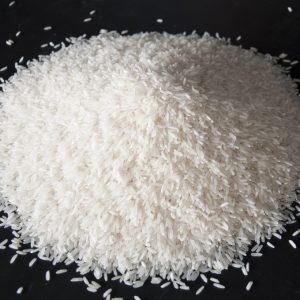General information
Rice is a cereal distributed in many food supply operations.
There is an indefinite number of types of rice. We mainly supply the type as per the specifications below. Check also beneficiaries’ food habits.
Rice in its original state is called "paddy rice". It is treated by polishing it to remove the outer part around the grain. It can be sold as whole grain, after the first stage of polishing, or as white rice if more polished. Several grades of polishing exist. Rice can also be parboiled, meaning it is partially boiled in its husk, to better retain micro-nutrients, especially vitamin B1 which prevents Beriberi. Parboiled rice is also referred to as “easy-cook rice” or “converted rice”. When parboiled, the content of ungelatinized grains in the rice will be verified.
Fumigation of stocks should be done at least every 3 months, and more often if needed.
Impact on the local, national, or regional market availability and prices should be carefully looked at before purchasing large quantities.
Specifications
Specifications vary with national regulations. Below you will find the most commonly used specifications. Importation of food is always subject to acceptance from the national authorities, based on their national specifications; check these before purchasing.
Analysis of microbiological, chemical or radiological contaminants, toxins, heavy metals and pesticide residues (see table below) must certify the product is “fit for human consumption”. The supplier shall submit related Lab reports / Declarations.
Refer to HQ when offered specifications which are different from our standard specifications. These will have to be approved by a food specialist prior to purchase.
Common part of specifications for all types of rice, to include in all contracts:
For all aspects of the product, unless described otherwise here below, the standard of Codex Alimentarius last edition applies, including the packaging.
Product must be:
- In accordance with the present specifications and national regulations of recipient country.
- Free from Genetically Modified (GMO) rice.
- Free from abnormal flavour/odour and living insects/pests or moths.
- With a "best before" date valid for minimum 2 years at date of delivery.
- Delivered goods to be according to approved sample.
What are the quality standards of rice?
Head rice:
Head rice normally includes broken kernels that are 75-80% of the whole kernel. High head rice yield is one of the most important criteria for measuring milled rice quality. Broken grain has normally only half of the value of head rice.
What are the three main grades of rice?
The 3 Types of Rice and How to Pick the One That's Right For ...
Rice is broadly divided into three categories based on grain length—long, medium, and short. The length of the grain is indicative of the texture of the cooked rice and, consequently, its traditional preparation and use.
Packing
Net weight 50kg per bag.
All bags must be clean, dry, undamaged and firmly sewn.
Recycled bags not allowed, nor recycled plastics for making bags.
Closing with double stitch at both ends of the bags.
Additional 2% of empty spare bags (outer bag only if multiple packaging), with same marking.
Test as per EN276 for PP bags or EN 766 for jute bags: Bags should resist without any damage one drop from 1.2 m high on the base, and 2 drops on each side from 1.6m high.
Different types of packaging are possible. Choice of the right packaging depends on several factors, including the condition of transportation and handling.
a) New woven-polypropylene (PP) bag, weighing 120g/bag.
b) New woven-polypropylene (PP) bag, weighing 120g/bag, lined with the same 120g PP bag with the top edges of the bags sewn together.
c) New jute bag, weighing 370g/bag lined with woven-polypropylene bag, weighing 110g/bag, with the top edges of the bags sewn together.
d) New cotton bag, weighing 180g/bag, lined with woven-polypropylene bag, weighing 110g/bag, with the top edges of the bags sewn together.
e) New composite jute/polypropylene bag weighting 335g/bag.
e) New jute bag weighing 600g/bag, for grain only.
f) In some special cases for flour only: paper bag of 1kg net weight content.
Pallet load
Shrink wrapped pallet, without covering the top of the pallet to let it breathe. Can also be secured with straps, to be re-tensioned regularly as the flour will pack down during transport.
Shrink-wrap film must be removed at time of storing.
Fumigation
Commodities must have been fumigated maximum 30 days prior to departure date.
Fumigation products must come from licensed manufacturers and the supplier/retailer must be able to provide full certificate of analysis for the batch to be supplied.
Marking
Each bag to be marked with non-toxic ink, to remain readable after a minimum of 10 handlings.
- Name of the product
- Net weight in kg
- Crop year
Minimum documentation required for quality assurance from the supplier.
To be established by an official body:
- Certificate of inspection
- Certificate of origin, including crop year
- Health Certificate or Phytosanitary Certificate
- Weight and Quality Certificate
- Non-radioactivity Certificate
- Fumigation Certificate (when required)
- Certificate stating whether GMOs may be included in the product
Other documentation needs to be provided according to the purchase agreement.


